N. Gemini Sasson's Blog, page 9
March 19, 2013
What's next?
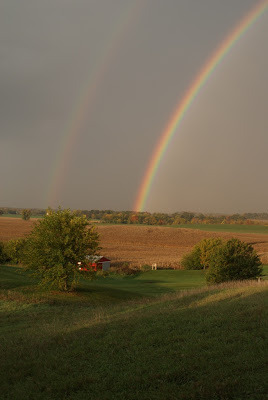 A lot of times I get asked the question: "When will your next book be out?" Until recently, I've always had a good estimate for a publication date and a solid book in the pipeline. While it seems like I can churn out a 100,000 word thoroughly researched historical novel in six months (having published six of them in less than three years), the reality is that it took me FIFTEEN YEARS to research, outline, write, re-write, re-re-write and finally publish those six books.
A lot of times I get asked the question: "When will your next book be out?" Until recently, I've always had a good estimate for a publication date and a solid book in the pipeline. While it seems like I can churn out a 100,000 word thoroughly researched historical novel in six months (having published six of them in less than three years), the reality is that it took me FIFTEEN YEARS to research, outline, write, re-write, re-re-write and finally publish those six books.Yes, 15 years. And each one was the equivalent of writing a graduate thesis (I know, because I've done that).
When my kids were younger, I decided one day after seeing the movie Braveheart that I wanted to write an epic historical novel. Well, that one book turned into three and I just kept writing. In between running the kidsters to dance classes, soccer games, track meets and band concerts - not to mention rehabbing two houses and raising the occasional litter of Australian Shepherd puppies - immersing myself in that long ago world was a glorious diversion. I was drawn there. I reveled in it. I felt a part of it.
Now, the kids are gone and I have the house to myself. You might think all this free time would turn me into a writing machine, but I've since figured out that it's living a full life that gives you reason to write. These days, when someone asks me, "When will your next book be out?, my answer is: "I don't know."
I've been doing some intense navel-gazing the last few months. I started a time travel historical romance, got 40,000 words into it and stalled at the historical section. This isn't so much 'writer's block' as it is just feeling pulled in another direction. Honestly, I'm not sure when I'll return to writing the research-intense biographical type of historical I'm known for, the main reason being the length of time it takes to actually (and properly) write such a book.
The other reason is simply that I want to explore issues that everyday people can relate to - love, life, loss and hope - without the restrictions imposed by writing in another time period. While the wall behind my desk is covered with letters from readers saying how much they enjoyed my historical fiction, I also know there's a large portion of the population that doesn't read the genre. I feel like there are things I have to say, experiences I want to share, and there are soooo many people I have yet to reach.
Meanwhile, I've been cleaning out the basement, running on the treadmill, thinking about a part-time job, purging filing cabinets and kitchen cupboards, and patiently waiting for spring to arrive so I can tidy up the garden while I ponder what I'll write next. Or whether I'll finally use that college degree and return to teaching and coaching.
A few days ago I wrote the opening to a new story. It's about a dog and the way she enters the lives of several people at just the right time (think A Dog's Purpose or The Art of Racing in the Rain). It was freeing. I'm excited. And it's all unfolding clearly in my imagination. With 25 years of experience training and raising dogs, I have a LOT of real-life stories I can work into the pages of a fiction book.
Having been hung up at this fork in the road for too long now, I'm going to set my feet down on this path and follow it for awhile. I have a feeling that this is the right thing for me to do right now. I sincerely hope many of my readers will follow me. I think you'll be able to relate.
Thanks to all of you for staying with me so long. I'm simply amazed when someone tells me they've read all six of my books. (Where do you find the time?) I really do have the best readers in the world!
Until later,
Gemi

Published on March 19, 2013 06:19
February 4, 2013
The King Arthur Conspiracy by Simon Andrew Stirling
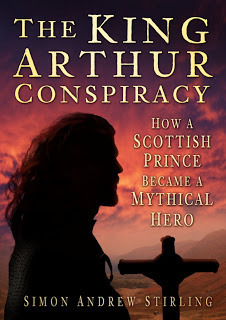 The greatest benefit of the years I spent on the writing site Authonomy were the talented writers I met during that time. One of those is Simon Andrew Stirling and I'm proud to introduce him here, along with his books, The King Arthur Conspiracy, How a Scottish Prince Became a Mythical Hero and Who Killed William Shakespeare? The Murderer, The Motive, The Means.
The greatest benefit of the years I spent on the writing site Authonomy were the talented writers I met during that time. One of those is Simon Andrew Stirling and I'm proud to introduce him here, along with his books, The King Arthur Conspiracy, How a Scottish Prince Became a Mythical Hero and Who Killed William Shakespeare? The Murderer, The Motive, The Means.Simon writes non-fiction and does it in a narrative style that brings to mind those dramatic voice-overs for movie trailers that grab your attention. He's also not afraid to tackle some of the great questions of history and levy what are not only strong arguments, but which sometimes break with tradition and make very bold statements. Rest assured, his are very scholarly works, backed up by solid resources.
Simon was generous enough to stop by and do a little Q & A for me. As you can see, he really has devoted his life to these subjects:
*****
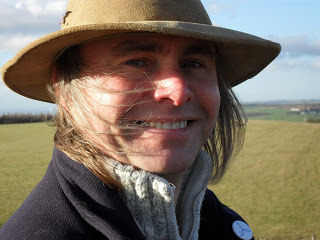 1) What is the title and genre of your current work and what's it about?
1) What is the title and genre of your current work and what's it about?"Who Killed William Shakespeare? The Murderer, The Motive, The Means". As with my previous publication, "The King Arthur Conspiracy", it was my publisher who came up with this title. All I did was alter three indefinite articles to three definite ones. Genre-wise, it's historical non-fiction, with some literary criticism and a fair bit of investigative research thrown in.
At one stage I was contemplating a trilogy based on the life of William Shakespeare. A major turning point in his life seems to have been the events surrounding the notorious Gunpowder Plot - allegedly, an attempt by Catholic militants to blow up the King and his Parliament in 1605 - and this would have formed one third of the trilogy. Another part would have been taken up with the end of his career, his retirement from the stage, and the strange circumstances surrounding his death. Finally, to complete the circle, as it were, I'd planned to cover Shakespeare's early life, which would put the rest into context.
In the end, though, I chose to focus on the end of Shakespeare's days but to incorporate much of the remaining material into the book. Thus, we start with a few chapters analysing his death. Then we go through his life - and the terrifying events which were being played out in England, and the rest of Europe, at the time - until, in the final chapters, we catch up with his death again. The last chapter looks at the life of his illegitimate son, who did much to keep the memory of Will Shakespeare alive through difficult times.
2) Where did you get the idea for it?
I grew up near Shakespeare's Stratford. In fact, I knew Stratford-upon-Avon pretty well long before I knew much about William Shakespeare. At an early age I got interested in acting, and at school I began to lean towards English Literature. I studied Eng Lit, Drama and Gaelic Studies at university (briefly) and then went to drama school in London. Little by little, Shakespeare became quite a big part of my life. When I became a professional dramatist and scriptwriter, it struck me that it would be useful to know what made Shakespeare tick. What was it about him that allowed him to become the greatest writer in the English language? I was particularly intrigued by the character of Lady Macbeth - where did she come from? So I started to research his life.
One thing that really helped was moving back to Shakespeare country. Towards the end of the 1990s, I left the city and set up home in rural Worcestershire, where I met my wife Kim (who was born in Stratford). A little later, my brother opened a shop in Stratford town centre, so I was spending more time there. Also - and this is a big advantage - I knew a great deal about the area around Stratford. Most Shakespeare biographers pop up from London, look around Stratford, and then go back. I've spent most of my life in the areas which Shakespeare knew, and so I'm more aware of the local traditions which most commentators either ignore altogether or don't really understand.
3) How long did it take you to write it, from picking up your first research book to the final product?
Twenty-five years. On and off, obviously. But I know that I was 20 or so when I thought, "Wouldn't it be interesting to know what was going on in Shakespeare's life when he wrote "Macbeth", and to figure out where the character of Lady Macbeth came from - was it mid-life crisis? an unhappy love affair?" That meant researching Shakespeare's life up until the age of 41 or 42, and researching the Gunpowder Plot alongside that. That took about ten years, after which I began to look a bit more closely at the end of his life, and then his early years, and here I am, about to turn 46 and soon to publish the results of my quest.
Actually writing the manuscript for "Who Killed William Shakespeare?" took seven months.
4) Were there any special challenges with tackling a complex topic like this? How does it differ from other books on Shakespeare?
One huge challenge (which complicated the first twenty years of research) was this: I found reading - and watching - Shakespeare's work utterly unenjoyable. Hardly any of it made sense. Reading or going to see a Shakespeare play, even at the Royal Shakespeare Theatre in Stratford, felt a bit like going to the dentist: unpleasant, and actually quite painful, but good for you in the long run. It annoyed me intensely, though: here was the best writer, the national poet and an ongoing obsession of mine, and picking my way through his work was like trying to read a foreign language.
Actually, it wasn't quite like that. I understood the words Shakespeare was using - I just couldn't figure out what he meant when he strung those words together. The breakthrough came in the mid-2000s, when I started to ask myself: "Could Shakespeare have been Catholic?" Looking back, it's amazing that I hadn't asked that question before - after all, Shakespeare was closely connected to the gunpowder plotters (who were Catholic), and his main patron grew up a Catholic, and his father had signed a Catholic will, and there are Catholic characters in many of Shakespeare's plays. The problem, though, is that Catholicism was outlawed in Shakespeare's England. Catholics were made to suffer horribly - even though, up until the time when Shakespeare's father was a boy, everybody in the country had been Catholic.
Researching Catholicism in Shakespeare's England, and the appalling suffering of the Catholics, proved to be the key. Suddenly, plays which had meant nothing before became enormously meaningful. They also became angry, painful, horrifying. Most of all, though, I could read them for pleasure. The old problem of not being able to understand and enjoy Shakespeare had gone.
But that's not all. My access to the local traditions concerning Shakespeare had alerted me to a story, told by a Victorian clergyman, regarding Shakespeare's skull. It's not where you might think it is. I tracked down a journalist who had photographed the skull. By painstakingly comparing the skull with various images of Shakespeare - including the most famous portraits, and a death mask, now in Germany, which many English Shakespeare experts refuse even to talk about - I realised that this was Shakespeare's skull. The injuries inflicted are visible, not just on the skull but on the portraiture too. Those injuries tell us how Shakespeare died.
So what makes this book different? Well, it jettisons the old-fashioned nonsense (still pretty widespread) that Shakespeare was a humble, conforming, petit bourgeois Protestant - a man so self-effacing that he could die without anybody noticing - and puts his work squarely in the context of his times. It draws on local traditions, unknown to or ignored by most of his biographers, and follows them up to reveal some startling facts about his life. And it demonstrates, forensically, how he died, as well as explaining (to the best of my ability) why he was "stopped".
And it does all that in about 100,000 words - so the whole thing moves at a pretty good pace!
5) What other books do you have available and what are you working on next?
"The King Arthur Conspiracy: How a Scottish Prince became a Mythical Hero" was published last summer by The History Press. That was my first major venture into publishing, and it took me about eight years to get from stumbling across a historical reference to the genuine Arthur to seeing my book in print. I'm now following up on that research. Late last year I put together an academic paper which focused on Arthur's last battle (in Scotland) and uncovered some new trails. Moon Books have now offered me the chance to publish a chapter a month, online, of my work-in-progress, which I'm calling "The Grail: Relic of an Ancient Religion". The first chapter should be up on the Moon Books website in a few weeks, and hopefully we'll keep publishing a monthly chapter online until the book is complete. This will take about twelve months, and then the whole thing will be published in paperback by Moon Books. This is a new way of working for me, and I'm already finding it a fascinating challenge. Fortunately, I've got an artist who lives in the same village as me who's keen to create a unique image to go with each of the chapters, and there's a post-graduate student in New Mexico with whom I've been working on projects relating to the Grail legends for more than a year now, and he's great and providing useful and thought-provoking feedback. So, all in all, I'm hopeful that "The Grail" will be a fine addition to my ongoing work on the origins of the legendary Arthur and the early history of Britain. Better still, anyone who wants to will be able to follow the progress of the book, one chapter at a time, just by going to the Moon Books website (http://www.moon-books.net). How about that?*****
Thanks for stopping by, Simon!
Other useful links:
"The King Arthur Conspiracy" on Amazon.com
"Who Killed William Shakespeare?" on Amazon.com (release date 1August 2013)
Simon Andrew Stirling Author Page on Amazon
Simon Andrew Stirling blog:
http://www.artandwill.blogspot.co.uk/
The King Arthur Conspiracy facebookpage
Happy Reading,Gemi

Published on February 04, 2013 01:00
January 27, 2013
What to Read?
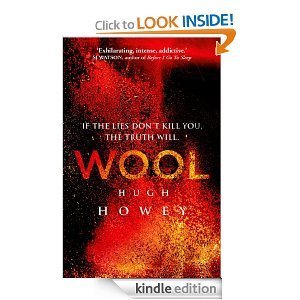
One thing I love to do is share about books I've read that have left an impression on me. Ever since I got my first Kindle, almost two years ago, I've come across more wonderful stories than I could ever imagine. So here are just a few titles you can check out!
#1 - Wool, Omnibus Edition, by Hugh Howey
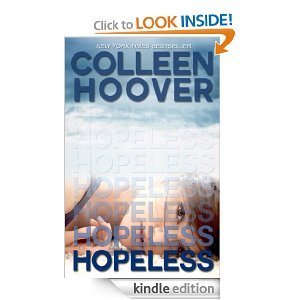 "This is the story of mankind clawing for survival, of mankind on the edge. The world outside has grown unkind, the view of it limited, talk of it forbidden. But there are always those who hope, who dream. These are the dangerous people, the residents who infect others with their optimism. Their punishment is simple. They are given the very thing they profess to want: They are allowed outside."
"This is the story of mankind clawing for survival, of mankind on the edge. The world outside has grown unkind, the view of it limited, talk of it forbidden. But there are always those who hope, who dream. These are the dangerous people, the residents who infect others with their optimism. Their punishment is simple. They are given the very thing they profess to want: They are allowed outside."~~~ Still not sure? Grab the first installment for FREE!
Hugh Howey is just one recent self-publishing phenomenon. Here's a New Adult novel from another:
#2 - Hopeless, by Colleen Hoover
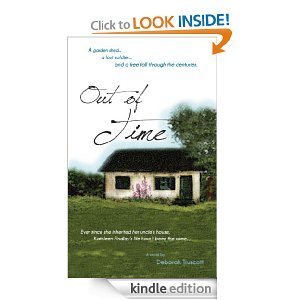 "Sometimes discovering the truth can leave you more hopeless than believing the lies...
"Sometimes discovering the truth can leave you more hopeless than believing the lies...That's what Sky realizes after she meets Dean Holder. A guy with a reputation that rivals her own and an uncanny ability to invoke feelings in her she's never had before. He terrifies her and captivates her all in the span of one encounter, and something about the way he makes her feel sparks buried memories from a past she wishes could just stay buried."
~~~ If you like Young Adult novels, but prefer something a little more . . . 'adult', this one has a lot of raw, gripping emotion. (*Contains some sex and violence. You have been warned. Still, great story and worth considering.)
#3 - Out of Time, by Deborah Truscott
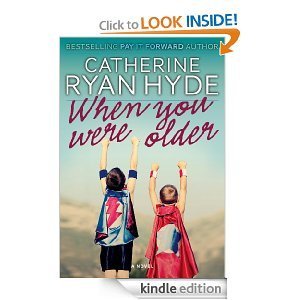 "Kathleen Findlay is married to a cad, her mother is driving her crazy and her life is falling apart. Then her uncle dies, leaving her the family’s Revolutionary-era home and, she believes, an escape from her chaotic marriage. But one afternoon, while searching for a rake, she discovers a man in her garden shed — and a free fall through the centuries.
"Kathleen Findlay is married to a cad, her mother is driving her crazy and her life is falling apart. Then her uncle dies, leaving her the family’s Revolutionary-era home and, she believes, an escape from her chaotic marriage. But one afternoon, while searching for a rake, she discovers a man in her garden shed — and a free fall through the centuries. As her life spins wildly out of control, Kathleen finds her heart and in the process, her own place in time."
~~~ A sweet time-travel romance that has me eagerly awaiting the sequel.
#4 - When You Were Older, by Catherine Ryan Hyde
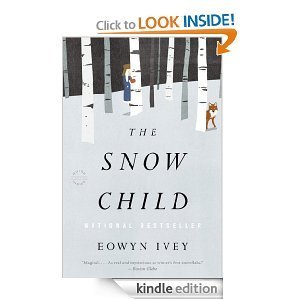 "Russell Ammiano works on the 104th floor of the World Trade Center. On the morning of September 11, 2001, the phone rings while Rusty is rushing to work. The news is devastating: Rusty's mother has died of a stroke, leaving his brain-damaged older brother Ben alone. This news also saves Rusty's life. He's still at home when two planes hit the World Trade Center--and only one of his friends and colleagues survives. In a single day, the life Rusty built in New York crumbles to the ground."
"Russell Ammiano works on the 104th floor of the World Trade Center. On the morning of September 11, 2001, the phone rings while Rusty is rushing to work. The news is devastating: Rusty's mother has died of a stroke, leaving his brain-damaged older brother Ben alone. This news also saves Rusty's life. He's still at home when two planes hit the World Trade Center--and only one of his friends and colleagues survives. In a single day, the life Rusty built in New York crumbles to the ground."~~~ Loved, loved, LOVED this book. I never knew what was going to happen and there were several surprises along the way that kept me flipping the pages. There's a growing love story in this one, hindered by the misunderstanding of cultures post 9/11.
#5 - The Snow Child, by Eowyn Ivey
"Alaska, 1920: a brutal place to homestead, and especially tough for recent arrivals Jack and Mabel. Childless, they are drifting apart--he breaking under the weight of the work of the farm; she crumbling from loneliness and despair. In a moment of levity during the season's first snowfall, they build a child out of snow. The next morning the snow child is gone--but they glimpse a young, blonde-haired girl running through the trees."
~~~ At times bleak and filled with desperation, there is a glimmer of hope in this beautifully written tale. This is the kind of book that wins awards.
*****
~~~ Thanks to everyone who trailed along on my virtual blog tour for Uneasy Lies the Crown. I want to thank all my tour stop hosts and Goddess Fish Promotions for their work in making it happen. I'll be picking winners of the giveaway in the next few days and notifying them via e-mail.
Happy reading,
Gemi

Published on January 27, 2013 11:16
January 14, 2013
Blurb Blitz Tour for Uneasy Lies the Crown
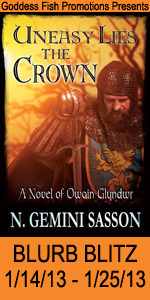 Join me January 14th through the 25th on a Virtual Blurb Blitz Tour for a chance to win an Amazon gift certificate! Simply stop in at any of the following blogs during the tour and leave a comment regarding Uneasy Lies the Crown, A Novel of Owain Glyndwr:
Join me January 14th through the 25th on a Virtual Blurb Blitz Tour for a chance to win an Amazon gift certificate! Simply stop in at any of the following blogs during the tour and leave a comment regarding Uneasy Lies the Crown, A Novel of Owain Glyndwr:January 14: My Devotional Thoughts
January 15: The Bunny's Review
January 15: STOP 2 Welcome to My World of Dreams
January 16: Oh, Chrys!
January 17: Uplifting Reads
January 18: Long and Short Reviews
January 21: Books Are Magic
January 22: Christine Young Romance Writer
January 23: Lisa Haselton's Reviews and Interviews
January 24: It's Raining Books
January 25: Hazel West's Character Purgatory
Until later,Gemi

Published on January 14, 2013 07:19
January 9, 2013
Royalist Rebel by Anita Seymour
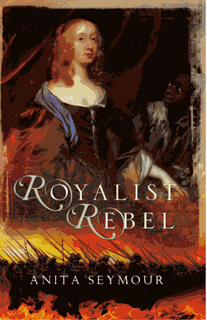 Please welcome my good friend and one of my first crit partners (who taught me so much!), author Anita Seymour, who also writes as Anita Davison. On January 17th, Anita's new book, Royalist Rebel by Claymore Books, an imprint of Pen and Sword, will be released.
Please welcome my good friend and one of my first crit partners (who taught me so much!), author Anita Seymour, who also writes as Anita Davison. On January 17th, Anita's new book, Royalist Rebel by Claymore Books, an imprint of Pen and Sword, will be released.If you like historicals set during the English Civil War, here's some more information on Anita's novel for you:
~~~~~
"Intelligent, witty and beautiful, Elizabeth Murray wasn’t born noble; her family’s fortunes came from her Scottish father’s boyhood friendship with King Charles. As the heir to Ham House, their mansion on the Thames near Richmond, Elizabeth was always destined for greater things.
Royalist Rebel is the story of Elizabeth’s youth during the English Civil War, of a determined and passionate young woman dedicated to Ham House, the Royalist cause and the three men in her life; her father William Murray, son of a minister who rose to become King Charles’ friend and confidant, the rich baronet Lionel Tollemache, her husband of twenty years who adored her and John Maitland, Duke of Lauderdale, Charles II’s favourite.
With William Murray at King Charles’ exiled court in Oxford, the five Murray women have to cope alone. Crippled by fines for their Royalist sympathies, and besieged by the Surrey Sequestration Committee, Elizabeth must find a wealthy, non-political husband to save herself, her sisters, and their inheritance."
~~~~~
To find out more, follow these links:
For a little background on the novel, see Anita’s Book Blog
Pen and Sword Books
The National Trust Website of Elizabeth Murray’s former home, Ham House, at Petersham near Richmond, Surrey
Anita’s Blog
Happy reading,
Gemi

Published on January 09, 2013 03:00
December 26, 2012
New look, same book
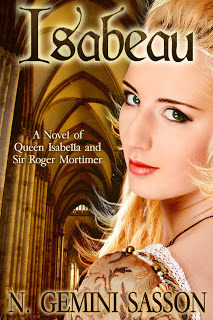 I've wanted to give Isabeau a makeover for ages and finally did it! Actually, the mega talented Steven Novak , illustrator and cover artist extraordinaire, did it.
I've wanted to give Isabeau a makeover for ages and finally did it! Actually, the mega talented Steven Novak , illustrator and cover artist extraordinaire, did it.I sent him the synopsis, a very brief description of Queen Isabella and we batted around a few ideas. He came up with this concept on the first try. A few tweaks later and I had a stunning new cover that is more consistent in its layout with the sequel, The King Must Die. I couldn't be happier!
So for those of you who momentarily exclaimed, "What? Another new book already?!" Uh, sorry, but no. Just a new cover. I still need to upload the updated files to the printer for the paperback version, but the changes have already been made for the e-book on Amazon and other retailers.
As for what I'm working on for my next book... let me just say to expect something a little 'different'.
Until later,
Gemi

Published on December 26, 2012 09:37
December 6, 2012
Paperback giveaway for Uneasy Lies the Crown
.goodreadsGiveawayWidget { color: #555; font-family: georgia, serif; font-weight: normal; text-align: left; font-size: 14px; font-style: normal; background: white; } .goodreadsGiveawayWidget img { padding: 0 !important; margin: 0 !important; } .goodreadsGiveawayWidget a { padding: 0 !important; margin: 0; color: #660; text-decoration: none; } .goodreadsGiveawayWidget a:visted { color: #660; text-decoration: none; } .goodreadsGiveawayWidget a:hover { color: #660; text-decoration: underline !important; } .goodreadsGiveawayWidget p { margin: 0 0 .5em !important; padding: 0; } .goodreadsGiveawayWidgetEnterLink { display: block; width: 150px; margin: 10px auto 0 !important; padding: 0px 5px !important; text-align: center; line-height: 1.8em; color: #222; font-size: 14px; font-weight: bold; border: 1px solid #6A6454; -moz-border-radius: 5px; -webkit-border-radius: 5px; font-family:arial,verdana,helvetica,sans-serif; background-image:url(http://www.goodreads.com/images/layou... background-repeat: repeat-x; background-color:#BBB596; outline: 0; white-space: nowrap; } .goodreadsGiveawayWidgetEnterLink:hover { background-image:url(http://www.goodreads.com/images/layou... color: black; text-decoration: none; cursor: pointer; } Goodreads Book Giveaway
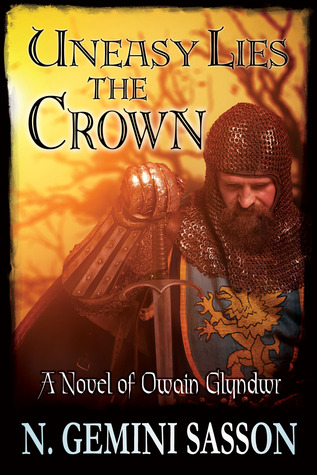 Uneasy Lies the Crown, A Novel of Owain Glyndwr by N. Gemini Sasson
Uneasy Lies the Crown, A Novel of Owain Glyndwr by N. Gemini Sasson 

 Uneasy Lies the Crown, A Novel of Owain Glyndwr by N. Gemini Sasson
Uneasy Lies the Crown, A Novel of Owain Glyndwr by N. Gemini Sasson Giveaway ends December 16, 2012.
See the giveaway details at Goodreads.
Enter to win
Published on December 06, 2012 09:05
November 24, 2012
Uneasy Lies the Crown - Now in paperback! And a giveaway!!!
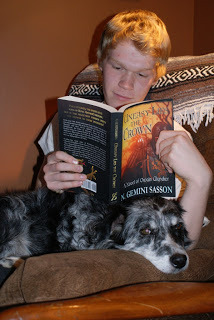
Uneasy Lies the Crown, A Novel of Owain Glyndwr is now available as a paperback from Amazon.com and Barnes and Noble. You can also grab it as an e-book from:
Apple (iTunes)
Barnes and Noble (Nook)
Amazon.com (Kindle)
Amazon.co.uk (Kindle for UK readers)
Smashwords
And from now until midnight Eastern time on Dec. 1st, I'm running a giveaway. For a chance to win a signed copy of a paperback of any of my books plus a $15 Amazon gift certificate OR just a $25 gift certificate, simply do the following:
1) Read Uneasy Lies the Crown and leave a review on Amazon.com or Amazon.co.uk. It needn't be a lengthy New York Times style book review, just your thoughts, plain and simple, stating your impression of the story and its characters.
2) Like my Facebook page if you haven't already and comment with the word 'Reviewed' in any of the appropriate posts about the giveaway - or leave me a message on Facebook. That's it! Reviews help not only authors, but guide other readers in deciding their next purchase.
(Giveaway open to customers of Amazon.com or Amazon.co.uk.)
I'm so incredibly appreciative of all the readers and book bloggers who've helped spread the word about my books and those who've written to let me know they enjoyed them and ask when the next one will be out. I wouldn't still be doing this without you. Telling stories is a dream come true.
Happy reading,
Gemi

Published on November 24, 2012 13:04
November 7, 2012
Owain Glyndwr and the Welsh War of Independence
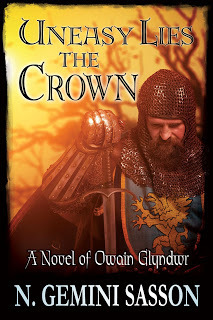 My latest release, Uneasy Lies the Crown, A Novel of Owain Glyndwr, is now available as an e-book for Kindle (Amazon.com and Amazon.co.uk), Nook (Barnes and Noble) and at Smashwords! The paperback should be available later this month, just in time for Christmas.
My latest release, Uneasy Lies the Crown, A Novel of Owain Glyndwr, is now available as an e-book for Kindle (Amazon.com and Amazon.co.uk), Nook (Barnes and Noble) and at Smashwords! The paperback should be available later this month, just in time for Christmas.In celebration, today I'm over at Sarah Woodbury's blog with a post on Owain Glyndwr and the Welsh War of Independence. Sarah writes time travel set in 13th century Wales, so be sure to check out her books, too.
Owain's story was actually the first historical novel I completed, over a decade ago. When my first agent was unable to find it a home, I set it aside and went to work on The Bruce Trilogy. This year, I resurrected the story of Owain Glyndwr because, like the other people I've written about, his was a life I felt that deserved more attention. Some historians have speculated that Owain Glyndwr emulated Robert the Bruce and adopted not only many of his military tactics, but also his wider political visions. Still, there are subtle, yet profound differences between the two historical figures.
While I leave you to ponder that, here's the synopsis:
*****
For centuries, the bards have sung of King Arthur’s return,
but is this reluctant warrior prince the answer to those prophecies?
In the year 1399, Welsh nobleman Owain Glyndwr is living out a peaceful gentleman’s life in the Dee Valley of Wales with his wife Margaret and their eleven children. But when Henry of Bolingbroke, the Duke of Lancaster, usurps the throne of England from his cousin Richard II, that tranquility is forever shattered. What starts as a feud with a neighboring English lord over a strip of land evolves into something greater—a fight for the very independence of Wales.
Leading his crude army of Welshmen against armor-clad columns of English, Owain wins key victories over his enemies. After a harrowing encounter on the misty slopes of Cadair Idris, the English knight Harry Hotspur offers Owain a pact he cannot resist.
Peace, however, comes with a price. As tragedies mount, Owain questions whether he can find the strength within himself not only to challenge the most powerful monarch of his time, but to fulfill the prophecies and lead his people to freedom without destroying those around him.
*****
Happy reading,
Gemi

Published on November 07, 2012 08:16
October 19, 2012
International Gathering of the Clans 2014 ***Update
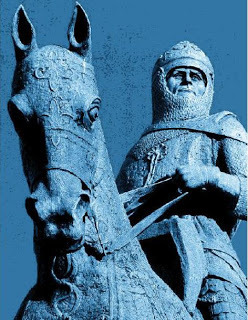 ***Latest news (10-21-12) is that this event is now CANCELLED, as per this post on Scotsman.com. It seems that fears are that Bannockburn does not have the infrastructure to support such a potentially large gathering. If this changes, I will let everyone know. ***
***Latest news (10-21-12) is that this event is now CANCELLED, as per this post on Scotsman.com. It seems that fears are that Bannockburn does not have the infrastructure to support such a potentially large gathering. If this changes, I will let everyone know. ***__________________
For those who would like to celebrate their Scottish roots, there will be an International Gathering of the Clans to be held in conjunction with the event Bannockburn 700, June 24th, 2014. This will be 700 years after Robert the Bruce defeated the forces of Edward II of England at the Battle of Bannockburn. For more information:
The Gathering 2014 (on Facebook)
Clans 2014
Bannockburn 700 (on Facebook)
I see Clan Gordon will have a tent there. Hoping some of my other ancestral families (Bruce, Douglas, Stewart, Johnston, etc.) will be in attendance. Sounds like a great excuse for a research trip/second honeymoon!
Until later,
Gemi

Published on October 19, 2012 06:51



